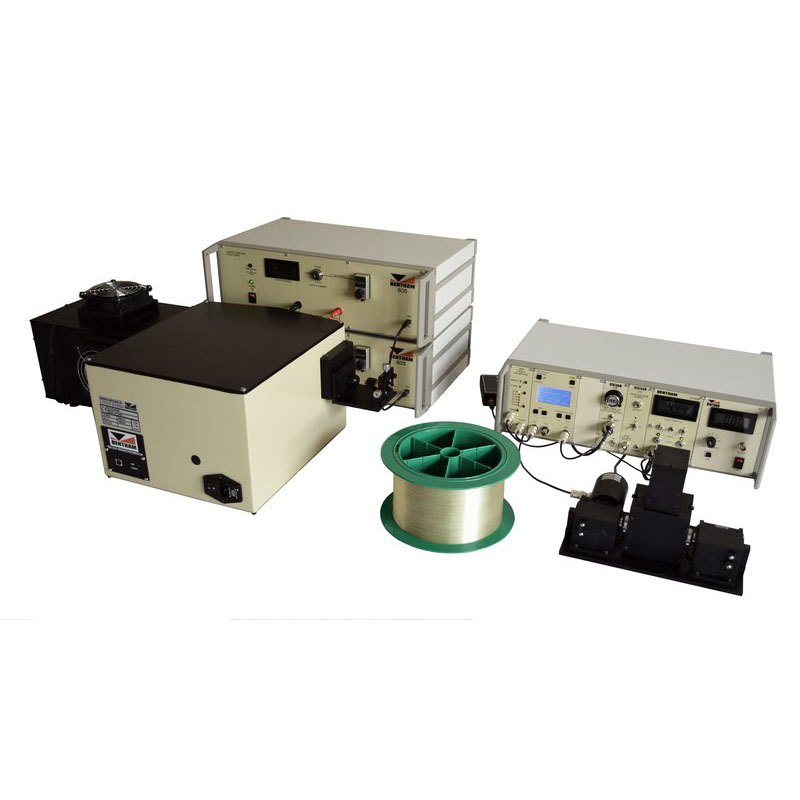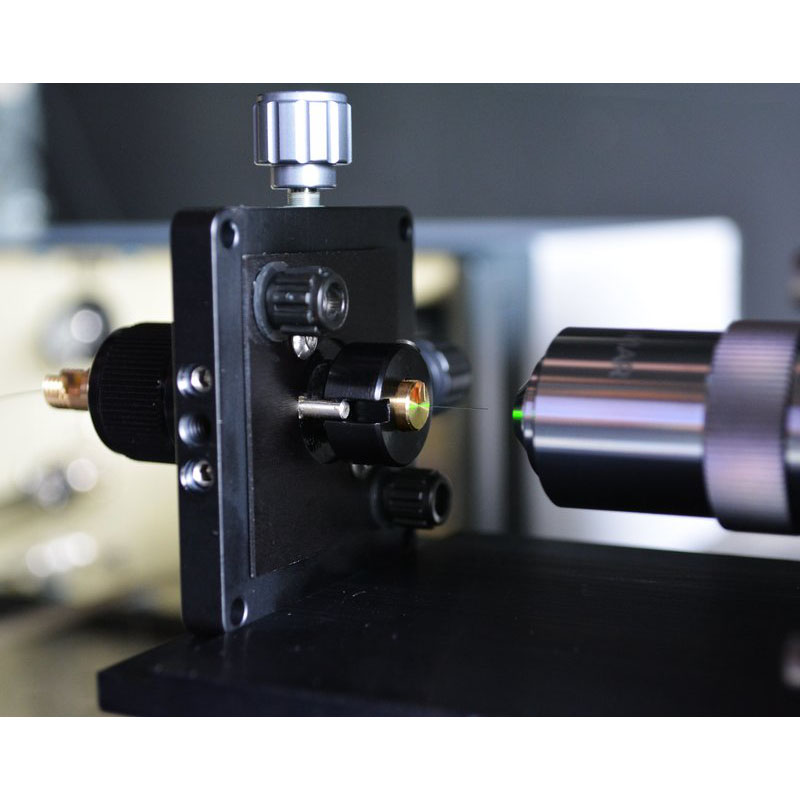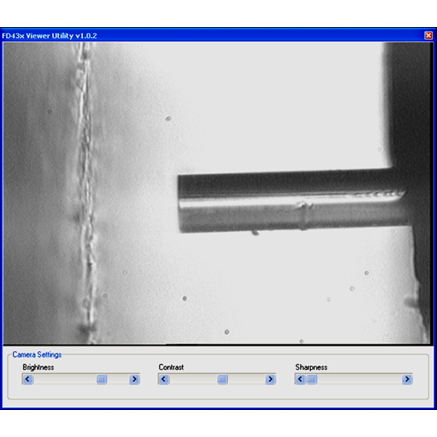Spectral attenuation of optical fibres
FSL300 from BenthamThe FSL300 system provides accurate assessment of fibre spectral loss, which is of paramount importance in quality control processes, materials research and optical fibre development. Using the internationally recognised reference test method, the cut-back technique, the FSL300 provides high measurement accuracy across all fibre types. Due to the sequential operation of this technique, the FSL300 has excellent optical and mechanical stability and repeatability at the cut-back end to ensure the highest level of measurement reliability.
- Accurate evaluation of the spectral losses by cut-back technique
- Wavelength range across the entire UV-Vis spectrum; Extendable for IR to over 5000 nm
- For a wide range of fibres (i.e. silica, doped glass, plastic and photonic bandgap fibres)
- Light source and launch optics firmly bolted to the monochromator
- No mechanical instability over time
- dB/km Loss calculation as a function of wavelength
Further information
The FSL300 is modular and offers maximum configuration flexibility through independent selection of light source, monochromator, lock-in amplifier, detectors and optics.
Advantages
- Superior optical and mechanical stability
- Modular design and high configuration flexibility
- Simple and reproducible measurement process
- Fully automatic measurement and calculation of spectral attenuation
Displayed parameters
- Spectral attenuation of the fibre, dB/km
Specifications
Fibre Assembly
| Start optics | Bare fibre chuck for fibre of 80-200µm |
| Detector | V-groove bare fibre holder for 125 μm fibre |
FSL300_Si
| Specral range | 350-1100nm |
| Typical spectral data interval | 5nm |
| Typical spectral bandwidth (FWHM) | 5nm |
| Light source | IL1 with optical chopper |
| Monocromator | TMc300 with grating 1200 g/mm |
| Detector | 2.4x 2.4mm Silicon: 350-1100nm |
| Wavelength accuracy | ± 0.2nm |
FSL300_InGaAs
| Spectral range | 800-1700nm |
| Typical spectral data interval | 5nm |
| Typical spectral bandwidth (FWHM) | 5nm |
| Light source | IL1 with optical chopper |
| Monocromator | TMc300 with 1200 g/mm grating |
| Detector | 1mm dia. InGaAs: 800-1700nm, uncooled |
| Wavelength accuracy | ± 0.3nm |
FSL300_InGaAs_EX
| Spectral range | 800-2500nm |
| Typical spectral data interval | 5nm |
| Typical spectral bandwidth (FWHM) | 5nm |
| Light source | IL1 with optical chopper |
| Monocromator | TMc300 with 830 & 600 g/mm grating |
| Detector | 1mm dia. extended InGaAs: 800-2500nm thermo-electrical cooled |
| Wavelength accuracy | ± 0.3nm |
FSL300_PbSe
| Spectral range | 1500-5000nm |
| Typical spectral data interval | 10nm |
| Typical spectral bandwidth (FWHM) | 10nm |
| Light source | ILD-QH-IR-CHOP |
| Monocromator | TMc300 with 600 & 300 g/mm grating |
| Detector | 3mm dia. PbSe: 1000-5000nm thermo-electrical cooled |
| Wavelength accuracy | GA-T306R1U6: ± 0.4nm |
FSL300_Dual_Si_InGaAs
| Spectral range | 350-1700nm |
| Typical spectral data interval | 5nm |
| Typical spectral bandwidth (FWHM) | 5nm |
| Light source | IL1 with optical chopper |
| Monocromator | TMc300 with 1200 & 830 g/mm grating |
| Detector | 2.4x2.4mm Silicon: 350-1100nm 1mm dia. InGaAs: 800-1700nm |
| Wavelength accuracy | GA-T312R0U5 ± 0.2nm |
Applications
- IEC 60793-1-40:2001
- Fibre ottiche - Part 1-40: Metodi di misurazione e procedure di prova – Attenuazione
Downloads
Contact

Navigation
Categories
Contact
Quantum Design GmbH
Roddarestigen 3
SE 182 35 Danderyd
Sweden
| Phone: | +46 8 41071791 |
| E-mail: | nordicqd-europe.com |






